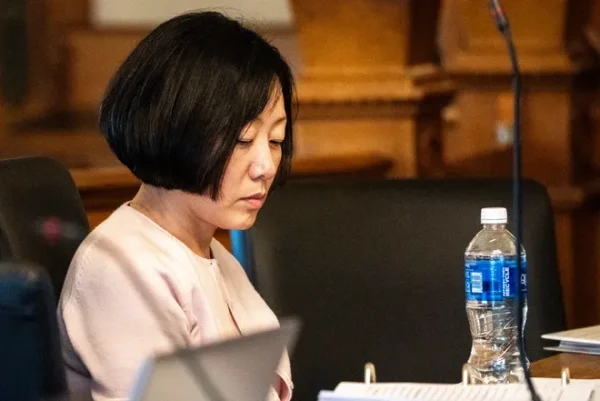Despite increase in African American students, increased diversity still desired in faculty
September 19, 2007
When Walter Lain, assistant dean for multicultural and ethnic affairs, began his work at Simpson nearly 5 years ago, there were fewer than 10 African American students on campus. This year, there are 34.
Lain believes Simpson has made a conscious choice to step up minority recruiting.
“I would say that this is a conscious effort that President Bryd has made a priority to extend the reach, not only geographically, but also across cultures,” Lain said.
Another step Simpson administration has made in the realm of minority recruitment came with the hiring of Catherria Turner, assistant women’s basketball coach and minority athletic recruiter. Turner points out that, through her job, she serves as a liason between minority recruits interested in playing sports at Simpson.
“My job is to bring in diversity to Simpson,” Turner said. “I have an emphasis on athletics. My job is to bridge the gap. We have the multicultural program here, and I’m to understand what they’re going to do as well as bring it back to the athletic department and the coaches.”
Still, it isn’t only just faculty and staff who are working at creating a more integrated student body.
Sophomore Mike Wilson serves as the vice president for the Multicultural Student Alliance. The group works to create events to merge a student body with an ever-widening range of ethnic backgrounds through events and discussions.
“One of the things we do is try to hold cultural events.” Wilson said, “We’re having a hip-hop dance on Sept. 29, which is just a way to bring people together. Because when people get together that’s how you break down those cultural barriers, racism and stereotyping and prejudices.”
Another on-campus event aimed at piercing cultural divides is Breaking Barriers, a monthly event that Lain describes as “an opportunity for a diverse group to share their views about various sensitive issues.”
An increase in diversity on campus doesn’t necessarily translate into an entirely accepting student body. As Wilson points out, ingrained beliefs about various ethnic groups still have an impact on campus.
“It involves upbringing,” Wilson said, “but it also involves the willingness to be tolerant. That can be learned at any age. I think that it’s really important to accept somebody when they come to the campus because when somebody feels that they’re not accepted, they leave. That’s a really big effect and it translates into looks and stares. Its amazing what a stare can do to a person.”
Lain points out the importance of providing ways for students of all backgrounds to have a dialogue in order to understand one another.
“I think it takes some work,” Lain said, “because I think that there has to be opportunities. We assume students that move to get together and share this, but it doesn’t really come natural, and I think that they have to be given permission to discuss these in somewhat a safe environment.”
Turner notes that students from a variety of backgrounds are still learning how to work with one another both on and off the court, but are open to deciphering how to do so.
“I think that there’s things we can do to allow them [students of different backgrounds] to work together a little bit more,” Turner said. “I’m definitely not saying that the job is done, there are some gaps that need to be filled, but I would definitely say that everyone is willing to do that.”
While numbers clearly indicate a rise in diversity among students, there is still a desire for a faculty with a more varied background. This desire, Lain notes, is a work in progress.
“I think that when it comes to staff on campus, we still have a ways to go to prove that diversity among the staff as well. Those continue to be challenges. We haven’t done quite so well with that, I think. There’s lots of reasons why the pools of minority candidates are perhaps not as large as they could be. I would certainly like to look at what we’re doing to increase the availability of more minority candidates from a broad cross-section of people. That’s one of the things that we need to do.”
Wilson agrees that a more diverse faculty would provide advantages to students.
“There’s a benefit in having a more diverse faculty because you can teach a wider variety of classes,” Wilson said. “When you have different faculty from different backgrounds, you increase the amount of education in multicultural awareness that your students have.”
Turner notes that her position may have been a positive step in the direction of broadening faculty diversity.
“I think hiring me is a great way to start that,” Turner said “They’re actually recognizing. That’s a first step to everything, recognizing that there needs to be a change.”
While Simpson still has work to do in the area of increased faculty diversity, Lain notes that efforts will have positive long-term effects for all students.
“I think its fairly well settled that people who have a college experience where they get to experience different cultures and people from different countries,” Lain said, “they’re more likely later on in life to sort of relate better to a diverse group of people.”












